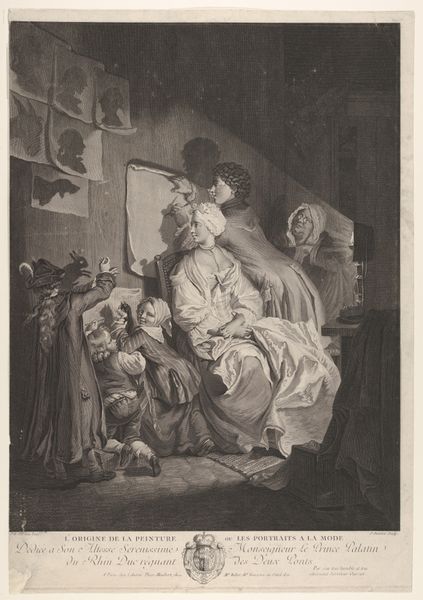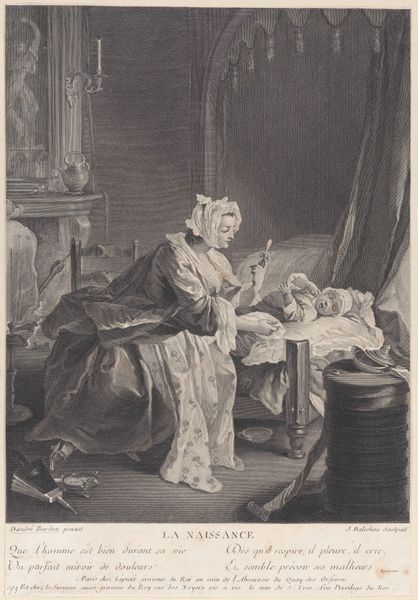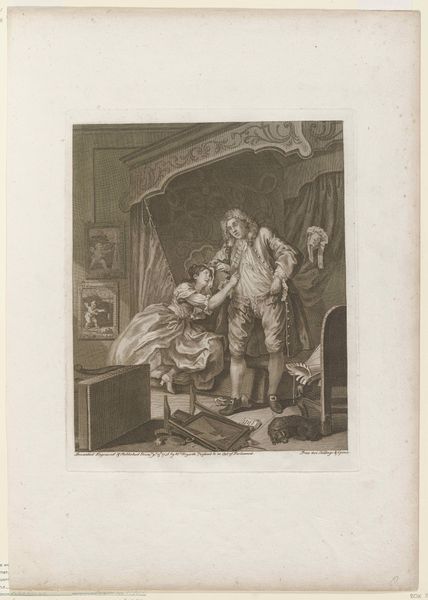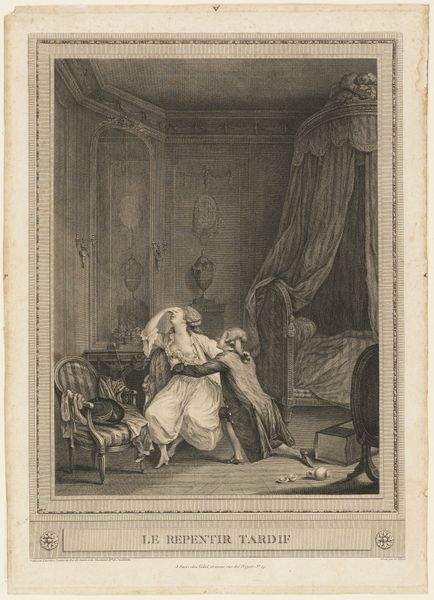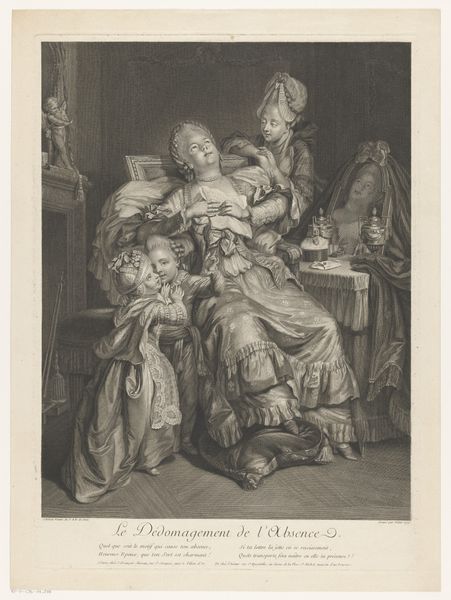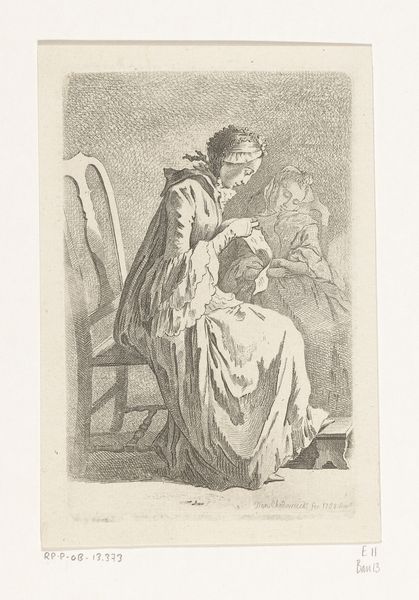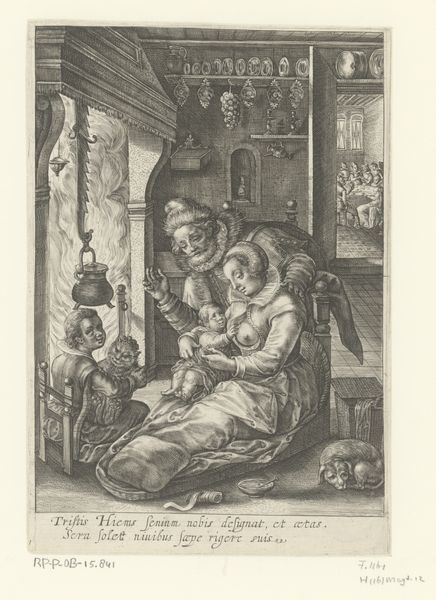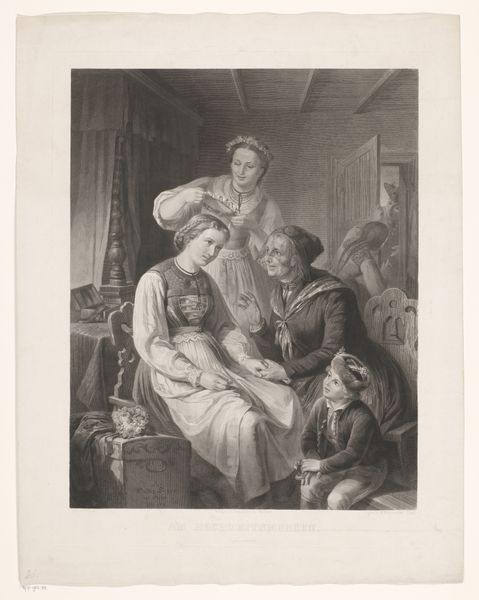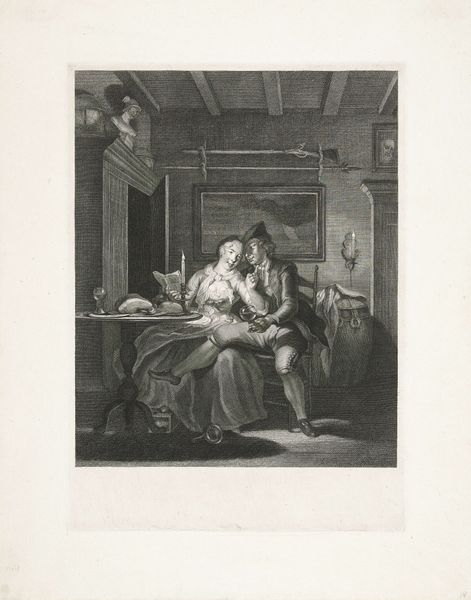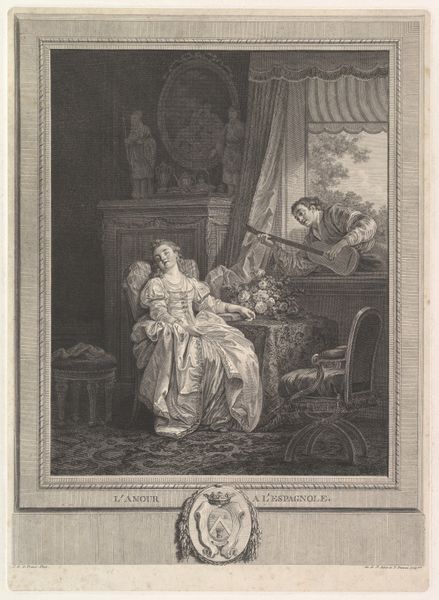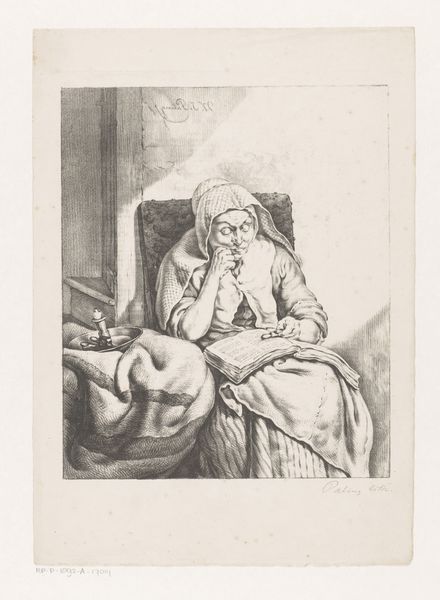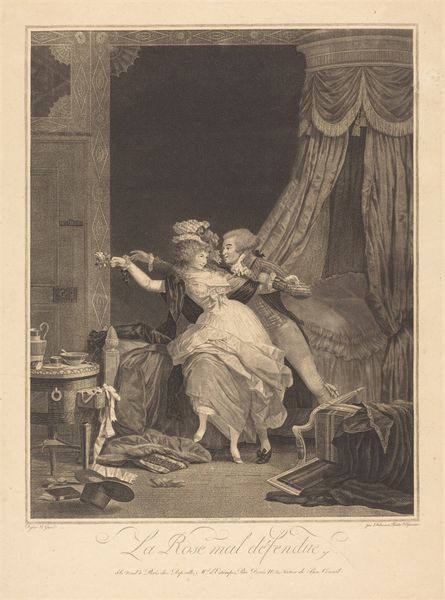
Dimensions: height 300 mm, width 254 mm
Copyright: Rijks Museum: Open Domain
Curator: Oh, it has this gentle luminosity! It reminds me of those hazy, sleepy afternoons when the world feels quiet. Editor: Exactly, a very tender scene depicted in "Interieur met een zittende vrouw die haar kind voedt" (Interior with a seated woman feeding her child). The engraving, dating back to 1767, is by Claude Henri Watelet and resides at the Rijksmuseum. Curator: An interior alright. But, those furtive little critters stealing a nibble beneath her feet while she feeds her little one! Don't you feel that tiny rebellion, the beautiful everydayness sneaking into something sacred? Editor: Indeed. Domesticity was a potent subject. Consider how representations of motherhood were regulated. There were strong philosophical claims, largely informed by Rousseau, of motherhood being a civic duty. Curator: Goodness! Watelet, sneaking the chaos and the bliss of being a mom into it! That cat dozing while a mouse stages its brazen heist – genius! Editor: Absolutely! The scene encapsulates Enlightenment notions of family, while it also seems to undermine them. The etching allows for mass distribution of imagery that encourages sentimentality towards family and childhood. These are key developments within the broader project of colonialism and emerging capitalism. Curator: Okay, but putting all the academic analysis aside…isn't it amazing? How, with such simple lines, he captures the softness of her gaze, the chubby little fingers reaching? Editor: Yes, it's technically superb! The nuances of tone, achieved through delicate lines, is striking! You notice the shadow and the delicate detail of the mother's updo that frames her face. The details really activate feelings of tenderness for her. Curator: And maybe Watelet saw this sacred bond as the glorious, complicated mess that it is! So the next time you pass this print, think of the mothers. The beauty. The chaos! Editor: Agreed. Let's recognize this artwork for its social context—depictions of ideal womanhood and motherhood but also it's ability to move beyond the moment it was created. Thanks for painting a different view.
Comments
No comments
Be the first to comment and join the conversation on the ultimate creative platform.

